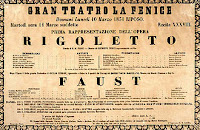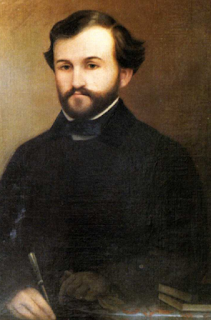Torquato Tasso – poet
Troubled Renaissance writer came back to Sorrento
Torquato Tasso, who has come to be regarded as the greatest Italian poet of the Renaissance, was born on this day in 1544 in Sorrento. Tasso’s most famous work was his epic poem Gerusalemme Liberata (Jerusalem Delivered) in which he gives an imaginative account of the battles between Christians and Muslims at the end of the first crusade during the siege of Jerusalem. He was one of the most widely read poets in Europe and his work was later to prove inspirational for other writers who followed him, in particular the English poets Spencer and Byron. The house where Tasso was born on 11 March, 1544 is in Sorrento’s historic centre, a few streets away from the main square, Piazza Tasso, in Via Vittorio Veneto. It now forms part of the Imperial Hotel Tramontano, where the words for the beautiful song, Torna a Surriento, were written by Giambattista De Curtis while he was sitting on its terrace in 1902. Tasso travelled about in Italy constantly during his 51 years but came back to Sorrento towards the end of his life to visit his beloved sister Cornelia, at a time when he was deeply troubled with mental health problems. Read more…
_________________________________________________________________
Franco Basaglia - psychiatrist
Work led to closure of mental hospitals by law
The psychiatrist Franco Basaglia, whose work ultimately led to changes in the law that resulted in the closure and dismantling of Italy’s notorious psychiatric hospitals, was born on this day in 1924 in Venice. As the founder of the Democratic Psychiatry movement and the main proponent of Law 180 - Italy's Mental Health Act of 1978 - which abolished mental hospitals, he is considered to be the most influential Italian psychiatrist of the 20th century. His Law 180 - also known as Basaglia’s Law - had worldwide impact as other countries took up the Italian model and reformed their own way of dealing with the mentally ill. Basaglia was born to a well-off family in the San Polo sestiere of Venice. He became an anti-Fascist in his teens and during the Second World War was an active member of the resistance in the city, to the extent that in December 1944, he was arrested and spent six months inside Venice’s grim Santa Maria Maggiore prison, being released only when the city was liberated in April of the following year. He graduated in medicine and surgery from the University of Padua in 1949. Read more…
________________________________________________________________
Sidney Sonnino – politician
Minister who pushed Italy to switch sides in World War One
Sidney Sonnino, the politician who was Italy’s influential Minister of Foreign Affairs during the First World War, was born on this day in 1847 in Pisa. Sonnino led two short-lived governments in the early 1900s but it was as Foreign Affairs Minister in 1914 that he made his mark on Italian history, advising prime minister Antonio Salandra to side with the Entente powers – France, Great Britain and Russia – in the First World War, abandoning its Triple Alliance partnership with Germany and Austria-Hungary. His motives were entirely driven by self-interest. A committed irredentist who saw the war as an opportunity to expand Italy's borders by reclaiming former territory, he reasoned that Austria-Hungary was unlikely to give back parts of Italy it had seized previously. Instead, he sanctioned the secret Treaty of London with the Entente powers, which led Italy to declare war on Austria-Hungary in 2015. In the event, although Sonnino backed the winning side, the promises made in the Treaty of London, namely that Italy would win territories in Tyrol, Dalmatia and Istria, were not fulfilled. Despite suffering major casualties, including 600,000 dead, Italy was granted only minor territorial gains. Read more…
_________________________________________________________________
Rigoletto debuts at La Fenice
Verdi opera staged after battle with censors
Giuseppe Verdi's opera Rigoletto was performed for the first time on this day in 1851 in Venice. It enjoyed a triumphant first night at La Fenice opera house, where the reaction of the audience was particularly gratifying for the composer and his librettist, Francesco Maria Piave, after a long-running battle to satisfy the censors. Northern Italy was controlled by the Austrian Empire at the time and a strict censorship process applied to all public performances. Verdi, who had accepted a commission to write an opera for La Fenice the previous year, knew he was likely to risk falling foul of the Austrians when he chose to base his work on Victor Hugo's play, Le roi s'amuse, which provoked such a scandal when it premiered in Paris in 1832 that it was cancelled after one night and had remained banned across France ever since. Hugo's play depicted a king - namely Francis I of France - as a licentious womaniser who paid only lip service to what was considered moral behaviour as he constantly sought new conquests. The French government had been horrified by the play's disrespectful portrayal of a monarch and the Austrians. Read more…
Home


























